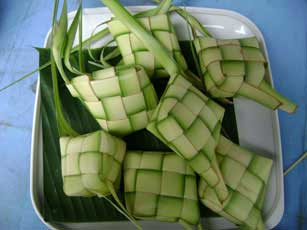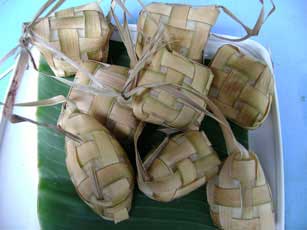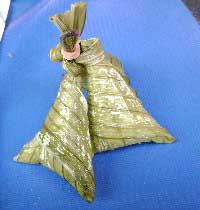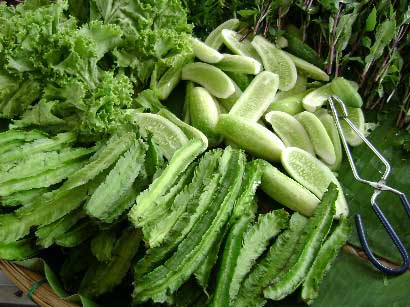Malaysia beauty unmatched
The articulate Malaya is the articulate that is synonymous to adventure, nature, example and variety. Malaya Tourism has flourished extensively in the past few years and the credit goes to the unexplored and secret natural destinations and views which were not seen by the concern ever before. Malaya is an Orient land and all the Asian countries are well known for their forests, beaches, wildlife, flora and fauna, and beauty. Cheap Tours Packages Malaysia brings you the opportunity to explore Malaya for yourself. In the present time movement and tourism plays an essential persona in any frugalness and this is the reason ground Malaysian Tours and Travel is on a broad speed!
Some of the most sought after places and destinations include famous beaches same Kuantan, Pulau Tioman, Pahang, Kedah, and Langkawi and many more. These beaches are same assets for this land as most of the tourists are attracted towards these wonderful beaches.
Owing to the mixed society and population Malaya happens to be a land with diverse churchlike beliefs and churchlike destinations. All the churchlike and soulful individuals meet Malaya for erst to assuage their thirst for churchlike noesis and peace. Basically Malaya is an Islamic land and this crapper be said because it is its authorised belief but actually there are grouping from all the religions. Buddhism, Sikhism, Hinduism, Christianity and many more! Cheap Tours Packages Malaysia offers you to meet religion monasteries and Hindu temples and Churches. We leave no stone unturned so that you are satisfied to the fullest.
Apart from the churchlike characteristic there is so much to countenance and to explore in Malaysia! The underwater chronicle has been the most essential in the Tours and Travel Industry. Underwater scenes are so beautiful and tempting that no digit crapper resist their beauty. Even if you are not a very good traveler or diver you crapper ease view the Arial example with the resource of the experts.
Moreover the architecture of this land is as beautiful as everything else. Cheap Tours Packages Malaysia allows you to come fireman with the extra confidence and breath captivating sky scrapers and designs. The example of the architecture of this land lies with the not so conventional ideas and designs. Some of the examples are Subang International Airport, National Mosque, National Monument, Kuala Lumpur Tower, and many more.
Discussing about Malaysia Tourism, is the best tourism location and delicious food, Unique in Malaysia.
Wednesday, December 8, 2010
Malaysia is a beautiful.
Malaysia tour
Malaysia is a beautiful tourist destination in South East Asia. The sheer diversity of the tourism destinations is amazing. It is a beautiful country blessed with astounding attractions with rich culture and traditions, colonial hills, numerous pristine beaches, exotic wildlife parks and sanctuaries, world’s oldest tropical rainforest and pleasing climatic conditions. On your visit to Malaysia you have wonderful opportunity to see and explore some exciting tourism destinations, which are one of its kinds.
On your Malaysia Tours visit to the famous cities that includes the famous Kuala Lumpur (the capital city), Kelantan (the Land of Lightning), Malacca, Negeri Sembillian, Penang, Perlis, Sabah, Sarawak, Terengganu, etc. These beautiful tourist destinations of Malaysia provide wonderful opportunity to see and explore some exciting range of attractions which exhibits the beauty and magnificence of Malaysia also called “Truly Asia”.
Visit to Kuala Lumpur offers you to see the harmonious mix or medieval and modern charm, rich culture and traditions, sky striking building, ultra modern architectures and magnificent heritage buildings. One of the famous among all the architectural wonder is the world famous Petronas towers, the tallest twin buildings in the worlds. Here one can visit to the lovely Batu Cave, Lake Gardens ( Taman Tasik Perdana), Merdeka Square, Chinatown and the central markets. Beside these you can do lots of shopping in the bustling markets and malls of Malaysia and take back home memories and souvenir for a lifetime memories of tours in Malaysia.
Penang is also a beautiful holiday destination in Malaysia that deserves the attentions of tourists from all over the world. The perfect fusion of medieval and modernity, Penang a beautiful island destination in Malaysia offer tourists to see and explore some exciting tourism attractions that include Batu Ferringhi (top beach destination), Fort Cornwallis, Kapitan Keling Mosque, Kek Lok Si, Leong San Tong Khoo Kongsi, Queens Bay Mall (one of the biggest shopping mall in Malaysia), Snake Temple, Sri Mahamariamman Temple and Wat Chaiyamangkalaram. These beautiful attractions have truly enhanced by the beauty and magnificence of Penang and are now one of the major tourist attractions of Malaysia Package Tours. Truly you will have wonderful time in Penang that you will love to treasure to relish in forever.
Cameron Highlands is one of the most beautiful place which is must visit destination on Tours to Malaysia. It is a beautiful hill resorts with evergreen beauty, sprawling tea plantations, strawberry farms, flower nurseries, butterfly farms and on top the place in also famous for its pleasing climatic conditions. This beautiful hill resort never fails to impress the heart of tourists with its scintillating tourist attractions and the pleasing climatic conditions.
Apart from these Malaysia is also very famous for its well organized tourist attractions, hospitable people, rich culture and traditions, excellent infrastructure, easily accessibility of tourism destinations, delicious delicacies and world class accommodation facilities. All these have truly made Malaysia the most demanding holiday destination of South East Asia. Come for Malaysia tour and experince the beauty and charm of truly Asia in a delightful and memorable way.
Malaysia is a beautiful tourist destination in South East Asia. The sheer diversity of the tourism destinations is amazing. It is a beautiful country blessed with astounding attractions with rich culture and traditions, colonial hills, numerous pristine beaches, exotic wildlife parks and sanctuaries, world’s oldest tropical rainforest and pleasing climatic conditions. On your visit to Malaysia you have wonderful opportunity to see and explore some exciting tourism destinations, which are one of its kinds.
On your Malaysia Tours visit to the famous cities that includes the famous Kuala Lumpur (the capital city), Kelantan (the Land of Lightning), Malacca, Negeri Sembillian, Penang, Perlis, Sabah, Sarawak, Terengganu, etc. These beautiful tourist destinations of Malaysia provide wonderful opportunity to see and explore some exciting range of attractions which exhibits the beauty and magnificence of Malaysia also called “Truly Asia”.
Visit to Kuala Lumpur offers you to see the harmonious mix or medieval and modern charm, rich culture and traditions, sky striking building, ultra modern architectures and magnificent heritage buildings. One of the famous among all the architectural wonder is the world famous Petronas towers, the tallest twin buildings in the worlds. Here one can visit to the lovely Batu Cave, Lake Gardens ( Taman Tasik Perdana), Merdeka Square, Chinatown and the central markets. Beside these you can do lots of shopping in the bustling markets and malls of Malaysia and take back home memories and souvenir for a lifetime memories of tours in Malaysia.
Penang is also a beautiful holiday destination in Malaysia that deserves the attentions of tourists from all over the world. The perfect fusion of medieval and modernity, Penang a beautiful island destination in Malaysia offer tourists to see and explore some exciting tourism attractions that include Batu Ferringhi (top beach destination), Fort Cornwallis, Kapitan Keling Mosque, Kek Lok Si, Leong San Tong Khoo Kongsi, Queens Bay Mall (one of the biggest shopping mall in Malaysia), Snake Temple, Sri Mahamariamman Temple and Wat Chaiyamangkalaram. These beautiful attractions have truly enhanced by the beauty and magnificence of Penang and are now one of the major tourist attractions of Malaysia Package Tours. Truly you will have wonderful time in Penang that you will love to treasure to relish in forever.
Cameron Highlands is one of the most beautiful place which is must visit destination on Tours to Malaysia. It is a beautiful hill resorts with evergreen beauty, sprawling tea plantations, strawberry farms, flower nurseries, butterfly farms and on top the place in also famous for its pleasing climatic conditions. This beautiful hill resort never fails to impress the heart of tourists with its scintillating tourist attractions and the pleasing climatic conditions.
Apart from these Malaysia is also very famous for its well organized tourist attractions, hospitable people, rich culture and traditions, excellent infrastructure, easily accessibility of tourism destinations, delicious delicacies and world class accommodation facilities. All these have truly made Malaysia the most demanding holiday destination of South East Asia. Come for Malaysia tour and experince the beauty and charm of truly Asia in a delightful and memorable way.
Monday, November 8, 2010
Malaysian Food Culture
Unique food chain in Malaysia

Malaysian Food is not one particular distinction of food but a culinary diversity originating from it's multi-ethnic population of Malay, India, Eurasian, Chinese, Nyonya and the Indigenous peoples of Borneo. A brief look into the past and how this multi-ethnic country came to be, is essential in order to comprehend how such a cosmic array of food, has now come to be known all over the world as 'Malaysian Food'. Presented here are some of the various delicious and popular dishes from this rainbow of gastronomic spectrum, with pictures and detailed recipes, from each unique ethnic kitchen.

Malaysian Food is not one particular distinction of food but a culinary diversity originating from it's multi-ethnic population of Malay, India, Eurasian, Chinese, Nyonya and the Indigenous peoples of Borneo. A brief look into the past and how this multi-ethnic country came to be, is essential in order to comprehend how such a cosmic array of food, has now come to be known all over the world as 'Malaysian Food'. Presented here are some of the various delicious and popular dishes from this rainbow of gastronomic spectrum, with pictures and detailed recipes, from each unique ethnic kitchen.
Dining - Malaysian cuisine is exotic with an exciting range of flovours and culinary styles offerring the uninitiated an endless gastronomic adventure. It comprises three main group - Malay, Chinese and Indian with each having its own distinct style of cooking. There are also cuisines that have evolved from the meeting of cultures notably those of the Nyonya and Indian Muslims communities. Western cuisines, especially Continental and Mediterranean fare, are also available in the major cities. Indeed, Malaysia as a meeting place of both eastern and western cultures, has produced a most diverse culinary melting pot. For teh visitor who is interested in dining out, Kuala Lumpur will prove to be a unique experience both in terms of the array of culinary delights as well as in the wide choice of settings. You can dine out at posh hotels, restaurants, elegant chain restaurants, chic sidewalk cafes, delicatessens or eat out at the many hawker stalls till the wee hours of the morning.
Malay Cuisines - Malay cuisine is rich and spicy arising from the use of hard spices and a wet spice mixture of "rempah" and coconut milk. Malay cuisine varies from region to region. Kelantanese cuisine, akin to Thai cooking for example, has a sweetish taste due to liberal use of coconut milk and sugar in cooking. On the other hand, the cuisine of Kedah is spicier due to the influence of Indians who arrived here centuries ago during the spice trade. For the adventurous, there is an array of popular Malay dishes to tantalise their taste buds. A favourite with Malaysians is "Nasi Lemak", rice cooked in coconut milk served with anchovies, squid, eggs, cucumber and sambal (chili paste). An East Coast favourite is "Nasi dagang", fragrant unpolished glutinous rice steamed with coconut milk and served with tuna fish curry. "Nasi Kerabu", another rice-based dish native to Kelantan, is served with local herbs and salted fish. A Malay banquet would not be complete without the ever popular "Satay", skewered chicken or beef marinated in spices, then grilled over charcoal fire. It is served with peanut gravy, rice cubes, cucumber and onions.
Chinese Cuisines - A wide variety of Chinese cuisines is available in Kuala Lumpur. Among the popular styles of cooking are those of the Cantonise, Hokkien, Hainanese, Hakka and Szechuan communities. Generally, Chinese cuisines is mild in flovour but local influence has given it a slightly spicier taste. In addition to breakfast, lunch and dinner, there are elevenses where "Dim Sum" (steam snacks) is served. Apart from hotels outlets and large chain restaurants, Chinese food is also available in most coffee shops around Kuala Lumpur. |  |
 |  |
Most beautiful holiday destination (Favourite destination in malaysia)
MAKE YOUR DREAM A STATEMENT..
All those beautiful have in Malaysia....
Malaysia is one of the most beautiful holiday destinations in Asia. It is world famous for its beautiful beaches, rich culture and heritage, world-class hospitality, pristine flora and fauna, vibrant cities, cheerful and friendly people. All the exciting part of Tourism Malaysia to attract visitors, tourists and holiday makers worldwide. In this wonderful holiday destination there are many exciting attractions that are unique to the world.
Malaysia has many fascinating tourist attractions. The pure mix of tourist destinations is amazing and never fails to attract tourists from vacation in this beautiful land. These include high-tech city of Kuala Lumpur, The most ancient tropical island of Langkawi, colonial hill stations of Genting and Cameron Highlands, many beaches, national parks, and the world's rainforests. Malaysia has the potential to serve tourists of all colors and it really lives up to its motto of Malaysia truly Asia.
Some of the must visit attraction in Malaysia
Kuala Lumpur
Famous for its high-tech marvel, Kuala Lumpur is the main attraction of Malaysia travel and travel. This is the only world city that is blessed with the beauty of nature at the same time, the colors of modernity. Come and meet both the fascinating side of Kaula Lumpur, which surly will make your holiday memorable and beautiful.
Malacca, located 147 km from Kaula Lumpur, Malacca is a city by the sea which offers visitors to explore and enjoy the cultural heritage. It's one of those places in Malaysia, where you can see the beautiful fusion of Chinese, Portuguese, Dutch and British cultures. Backwater concert in this city is another fascinating attraction offering a wonderful opportunity to enjoy the journey, while having a close look at the walls and historic ruins. Cheng Hoon Teng Temple is one of the oldest temple in Malaysia, which is to see and visit the attractions of Malacca.
Georgetown is located on the island of Penang is one of the oldest British settlement in Malaysia. That has a charm and beauty of Chinese culture, travel to George Town will take you 50 years ago. The historic town is loaded with the heart various attractions such as grabbing the Chinese houses, temples and vegetable markets, trishaw, etc. All are breathtakingly beautiful that never fails to attract tourists visiting the historical city of Malaysia - Georgetown .
In addition to these wonderful cities and their attraction miracle there are many other tourist places to be visited in Malaysia vacation package. Beyond travel, tourists can also enjoy your life as part of the celebration of the Malays living. His enthusiasm, sportsmanship and passion for the showcase of the celebration and parties of Malaysia complex spirit of the past and progressive. Well you have plenty of options for your holiday in Malaysia a lifetime experience. Just come once and is sure to love visiting this time of multiple tones Malaysia and again to explore the stunning beauty culture and attractions.
Accommodation package to go to your favourite destination
Other Destinations
- Popular Malaysia Destinations
- Johor Bahru Hotels
Kuala Lumpur Hotels
Langkawi Hotels
Melaka Hotels
Penang Hotels
Sabah Hotels
Sarawak Hotels -
ALL LOCATIONS IN MALAYSIA
Attractions by city
 * Kuala Lumpur attractions - Wilayah Persekutuan
* Kuala Lumpur attractions - Wilayah Persekutuan* Langkawi attractions - Kedah
* Melaka attractions - Melaka State
* Pulau Penang attractions - Penang
* Kota Kinabalu attractions - Sabah
* Kuching attractions - Sarawak
* Georgetown attractions - Pulau Penang
* Johor Bahru attractions - Johor
* Petaling Jaya attractions - Selangor
* Sandakan attractions - Sabah
* Miri attractions - Sarawak
* Ipoh attractions - Perak
* Batu Ferringhi attractions - Pulau Penang
* Putrajaya attractions - Selangor
* Brinchang attractions - Cameron Highlands
* Pulau Tioman attractions - Pahang
* Bukit Fraser attractions - Pahang
 * Butterworth attractions - Penang
* Butterworth attractions - Penang* Semporna attractions - Sabah
* Pulau Perhentian Kecil attractions - Terengganu
* Pulau Perhentian Besar attractions - Terengganu
* Kuala Kangsar attractions - Perak
* Shah Alam attractions - Selangor
* Kota Bharu attractions - Kelantan
* Seremban attractions - Negeri Sembilan
* Bentung attractions - Pahang
* Cherating attractions - Pahang
* Tanah Rata attractions - Cameron Highlands
* Sepilok attractions - Malaysia
* Kuah attractions - Malaysia
* Borneo attractions - Malaysia
* Sukau attractions - Sabah
* Pulau Redang attractions - Terengganu
* Kuala Besut attractions - Terengganu
* Kuala Berang attractions - Terengganu
* Subang Jaya attractions - Selangor
* Genting Highlands attractions - Pahang
Sunday, November 7, 2010
What you should know on malaysia.
Malaysia best tourism location
Malaysia is one of Southeast Asia’s top travel destinations, possessing an endless range of attractions and activities that cater for the cosmopolitan shopper, cultural enthusiast, historical buff and nature-lover. Divided into Peninsular Malaysia in the West and East Malaysia, part of the Borneo archipelago, the country will allure you with the shopping experience of its modern cities, the splendour of its cultural arts and natural heritage of rich flora and fauna.
In the heart of Asia lie some of the world's most beautiful beaches, with sparkling sand and crystal waters. It would be an impossible task to describe every one of Malaysia's thousands of beautiful beaches. Ranging from the powdery stretches of sand that characterize the eastern coastline of Peninsular Malaysia to the black sand beach of Pantai Pasir Hitam and the smooth pebble beach of Pantai Batu Kerikil, Malaysia's shores offer more idyllic locales than one could explore in many lifetimes.
Malaysia has fervently embraced modern technology - it boasts two of the world's tallest skyscrapers and a huge "cyber" center for computer businesses. But it still has some of the world's most remote jungle (in Sabah and Sarawak), one of Southeast Asia's most vibrant old ports (Georgetown) and an atmospheric colonial hill station (the Cameron Highlands). Even in Kuala Lumpur, the capital, which bristles with ambitious new building projects, you can still find exotic markets and plenty of local color. As a result, travelers to Malaysia can easily ratchet up or down the levels of adventure and comfort they want to experience.
Geography
The South China Sea divides Malaysia roughly in half. Peninsular Malaysian, the western half, is home to two-thirds of the country's 18 million inhabitants. The less developed states of Sabah and Sarawak make up the eastern half, which occupies the northern third of Borneo. In both areas, coastal lowlands give way to mountainous interiors. Tropical vegetation abounds. The rain forests are believed to be the oldest in the world. The nation includes dozens of small islands.
Malaysia has an international reputation as one of the most desirable destinations in Asia. This will come as little surprise to those who know the country well, afterall, Malaysia truly is an enticing place to visit. Immersed in warm tropical sun; blessed with various fascinating historical cities; beautiful hill resorts; an eclectic cultural mix; and stunning, sprawling rainforest (Malaysia's rainforests are amongst the oldest in the world at around 130 million years!). Malaysia provides a delightful blend of attractions to suit all visitors, and it continues to pull in a broad range of different (but equally curious!) travellers. It could well be the perfect place for your next vacation. MalaysiaExplorer is an independent and impartial travel guide written by a small team of local Malaysian writers based in different areas of the country. This means our guides provide a truly unique insight only possible through the eyes of a native. Our goal is to introduce you to the manifold cultural and natural dimensions of Malaysia in the most comfortable and affordable way! Our map of Malaysia is your portal to the ultimate traveller's handbook - click anywhere on the map below to find out more about Malaysia's states, federal territories and islands!
Malaysia is a country steeped in tradition - in everything from food to religion, and dress to architecture. It also boasts truly stupendous natural beauty. There are forests, beaches, mountains, rivers and national parks. For the adventurers it has diving, golf activities, whitewater rafting, cave exploring, paragliding, bird watching and various other pursuits. The nation has long been regarded a home from home for thrill seekers. Little wonder it is the tourism capital for the inquisitive traveller!
As far as accommodation is concerned you can choose from a wide range of suitable resorts and hotels, as per your specific requirements and budget. Our guides accommodate for travelers of all ages and experience, but if you're older than the age of 70 and traveling to Malaysia, it's wise to get yourself over 70 travel insurance from Saga. The MalaysiaExplorer blog is regularly updated with tourism bulletins containing the latest goings on and events! Be sure to subscribe and check in regularly to ensure you get the most out of your visit! Our candid FAQs and regular articles are also must reads for visitors. And finally, if you're incorporating a trip to Malaysia into a wider world tour then be sure to check out our friends over at travel world tips for locally written guides to every nation on the globe!
For those interested in undertaking a spiritual quest - you simply must visit Malaysia at least once in your lifetime! It's capital Kuala Lumpur has several museums and art galleries, which offer a vivid picture of the country's strong art and cultural history. Malaysia isn't all about adventures, history and culture, however, in fact it also boasts some of the most beautiful beaches in the world with golden sands, blue sky and a backdrop of amazing flora and fauna. If that sounds like your ideal getaway we recommend cheap beach holidays to all our readers looking to enjoy some sunshine! Our team of Malaysian writers share a completely unrivalled knowledge of the hidden beauties on offer, and so you can be sure our recommendations, write ups, reviews and tips are 100% trustworthy.
Malaysia began its post-Independence economy with an agrarian base, which has prepared it well to develop agricultural and commodities-based tourism, the hottest niche in eco-tourism today.
Recognizing that agro-tourism holds a fascination for both Malaysians and visitors alike, organizers of excursions these days include tours to rubber and oil palm estates, as well as pepper farms, fish farms, flower nurseries and fruit orchards. Fruit orchards have proven especially popular with visitors, not least because they get to enjoy the delicious exotic fruits they are there to learn about!
 Visits are structured around a tour offering insight into the cultivation, care, processing and manufacturing of these commodities for sale or export. The industry includes crops such as maize, cocoa, rubber, rice, fruits, oil palm and a variety of other products from which many Malaysians still earn a living.
Visits are structured around a tour offering insight into the cultivation, care, processing and manufacturing of these commodities for sale or export. The industry includes crops such as maize, cocoa, rubber, rice, fruits, oil palm and a variety of other products from which many Malaysians still earn a living.
Many locals and some adventurous visitors invariably seek out orchards dedicated to the famous and sometimes detested king of all fruits, the durian. Sometimes described as 'hell on the outside and heaven on the inside', the durian has few ambivalent fans, as you either tend to thoroughly enjoy it or not!
Visitors to durian farms can sample a range of these spiky, custard-like fruits with pulpy flesh that runs an entire gamut of textures and tastes from sweet to tart and more!
But durians are obviously not the only choice. In tropical Malaysia, an amazing array of exotic fruits awaits the fruit aficionado all year around. Among the many choices are the rambutan, langsat, mangosteen, jackfruit, pineapple and mango. Visits to these fruit farms often involve tucking into ready-to-eat freshly picked fruits.
Visitors to the highlands must pay a visit to the tea estates which grace their slopes. A number of these have been established since the early part of the last century, and harvesting and processing methods have changed little since.
Cameron Highlands, with its gentle slopes surrounded by loftier hills, is especially noted for its long-established estates. Most have excellent visitor facilities and provide guided tours of the tea factories.
On rubber estates, visitors have the opportunity to experience first-hand how to tap a rubber tree and witness how latex is processed - from coagulation to pressing and smoking. Malaysia is among the world's largest producers of this extremely valuable and versatile product.
Another of the country's largest export commodities is palm oil. Today, Malaysia is a world leader in the research and development of this multi-purpose fruit. The clusters of orange-red fruits produce refined cooking oil and other palm-olein products for use in the cosmetic and chemical industries.
In the northern regions of Peninsular Malaysia, a number of spice and herb farms dot the countryside. Nutmeg is especially abundant. While over in East Malaysia, visitors to pepper farms in Sarawak will be fascinated to know that black and white pepper come from the same tree! The difference is achieved in the processing of the corns. White pepper is more mature, having been soaked and had its outer skin removed before drying, while black pepper is dried in its original state.
A number of these destinations have stay-over facilities with a wide range of non-agricultural activities to enjoy as well, including fishing, kayaking and nature walks. In many cases, full room and board packages are available, meaning that guests get to indulge in local home-cooking as well.
Agro-tourism has a number of attractions, both to the visitor and the host. While it provides for interesting visits and discovery, many of these centers also serve as research and development hubs for the perpetuation and improvement of the agricultural industry in the country.
Malaysia is one of Southeast Asia’s top travel destinations, possessing an endless range of attractions and activities that cater for the cosmopolitan shopper, cultural enthusiast, historical buff and nature-lover. Divided into Peninsular Malaysia in the West and East Malaysia, part of the Borneo archipelago, the country will allure you with the shopping experience of its modern cities, the splendour of its cultural arts and natural heritage of rich flora and fauna.
In the heart of Asia lie some of the world's most beautiful beaches, with sparkling sand and crystal waters. It would be an impossible task to describe every one of Malaysia's thousands of beautiful beaches. Ranging from the powdery stretches of sand that characterize the eastern coastline of Peninsular Malaysia to the black sand beach of Pantai Pasir Hitam and the smooth pebble beach of Pantai Batu Kerikil, Malaysia's shores offer more idyllic locales than one could explore in many lifetimes.
Malaysia has fervently embraced modern technology - it boasts two of the world's tallest skyscrapers and a huge "cyber" center for computer businesses. But it still has some of the world's most remote jungle (in Sabah and Sarawak), one of Southeast Asia's most vibrant old ports (Georgetown) and an atmospheric colonial hill station (the Cameron Highlands). Even in Kuala Lumpur, the capital, which bristles with ambitious new building projects, you can still find exotic markets and plenty of local color. As a result, travelers to Malaysia can easily ratchet up or down the levels of adventure and comfort they want to experience.
Geography
The South China Sea divides Malaysia roughly in half. Peninsular Malaysian, the western half, is home to two-thirds of the country's 18 million inhabitants. The less developed states of Sabah and Sarawak make up the eastern half, which occupies the northern third of Borneo. In both areas, coastal lowlands give way to mountainous interiors. Tropical vegetation abounds. The rain forests are believed to be the oldest in the world. The nation includes dozens of small islands.
Fact Box
| ||||||||||
| Full country name | Malaysia | |||||||||
| Area | 329,847 sq km | |||||||||
| Population | 26,888,000 Million (2006 est.) | |||||||||
| Capital City | Kuala Lumpur note: Putrajaya is referred to as the administrative capital | |||||||||
| Climate | Tropical; annual southwest (April to October) and northeast (October to February) monsoons | |||||||||
| People | Malay and other indigenous 58%, Chinese 24%, Indian 8%, others 10% | |||||||||
| Religion | Muslim, Buddhist, Daoist, Hindu, Christian, Sikh; note - in addition, Shamanism is practiced in East Malaysia | |||||||||
| Language | Bahasa Malaysia, Chinese dialects, English, Tamil, indigenous dialects | |||||||||
| Government | Constitutional Monarchy | |||||||||
| Head of State | Seri Paduka Baginda Yang di-Pertuan Agong Al-Wathiqu Billah Al-Sultan Mizan Zainal Abidin Ibni Almarhum Al-Sultan Mahmud Al-Muktafi Billah Shah Al-Haj | |||||||||
| Head of Government: | Yang Amat Berhormat Dato' Sri Mohd Najib Bin Tun Haji Abdul Razak | |||||||||
| Currency | Ringgit Malaysia (RM) | |||||||||
| GDP | RM451 billion (2006 est.) | |||||||||
| GDP per capita | RM14,200 (2006 est.) | |||||||||
| Industries; Peninsular Malaysia - rubber and oil palm processing and manufacturing, light manufacturing industry, electronics, tin mining and smelting, logging and processing timber; Sabah - logging, petroleum production; Sarawak - agriculture processing, petroleum production and refining, logging Agriculture product; Peninsular Malaysia - rubber, palm oil, cocoa, rice; Sabah - subsistence crops, rubber, timber, coconuts, rice; Sarawak - rubber, pepper; timber. | ||||||||||
Malaysia has an international reputation as one of the most desirable destinations in Asia. This will come as little surprise to those who know the country well, afterall, Malaysia truly is an enticing place to visit. Immersed in warm tropical sun; blessed with various fascinating historical cities; beautiful hill resorts; an eclectic cultural mix; and stunning, sprawling rainforest (Malaysia's rainforests are amongst the oldest in the world at around 130 million years!). Malaysia provides a delightful blend of attractions to suit all visitors, and it continues to pull in a broad range of different (but equally curious!) travellers. It could well be the perfect place for your next vacation. MalaysiaExplorer is an independent and impartial travel guide written by a small team of local Malaysian writers based in different areas of the country. This means our guides provide a truly unique insight only possible through the eyes of a native. Our goal is to introduce you to the manifold cultural and natural dimensions of Malaysia in the most comfortable and affordable way! Our map of Malaysia is your portal to the ultimate traveller's handbook - click anywhere on the map below to find out more about Malaysia's states, federal territories and islands!
As far as accommodation is concerned you can choose from a wide range of suitable resorts and hotels, as per your specific requirements and budget. Our guides accommodate for travelers of all ages and experience, but if you're older than the age of 70 and traveling to Malaysia, it's wise to get yourself over 70 travel insurance from Saga. The MalaysiaExplorer blog is regularly updated with tourism bulletins containing the latest goings on and events! Be sure to subscribe and check in regularly to ensure you get the most out of your visit! Our candid FAQs and regular articles are also must reads for visitors. And finally, if you're incorporating a trip to Malaysia into a wider world tour then be sure to check out our friends over at travel world tips for locally written guides to every nation on the globe!
For those interested in undertaking a spiritual quest - you simply must visit Malaysia at least once in your lifetime! It's capital Kuala Lumpur has several museums and art galleries, which offer a vivid picture of the country's strong art and cultural history. Malaysia isn't all about adventures, history and culture, however, in fact it also boasts some of the most beautiful beaches in the world with golden sands, blue sky and a backdrop of amazing flora and fauna. If that sounds like your ideal getaway we recommend cheap beach holidays to all our readers looking to enjoy some sunshine! Our team of Malaysian writers share a completely unrivalled knowledge of the hidden beauties on offer, and so you can be sure our recommendations, write ups, reviews and tips are 100% trustworthy.
Malaysia Agro-Tourism | ||
Recognizing that agro-tourism holds a fascination for both Malaysians and visitors alike, organizers of excursions these days include tours to rubber and oil palm estates, as well as pepper farms, fish farms, flower nurseries and fruit orchards. Fruit orchards have proven especially popular with visitors, not least because they get to enjoy the delicious exotic fruits they are there to learn about!
 Visits are structured around a tour offering insight into the cultivation, care, processing and manufacturing of these commodities for sale or export. The industry includes crops such as maize, cocoa, rubber, rice, fruits, oil palm and a variety of other products from which many Malaysians still earn a living.
Visits are structured around a tour offering insight into the cultivation, care, processing and manufacturing of these commodities for sale or export. The industry includes crops such as maize, cocoa, rubber, rice, fruits, oil palm and a variety of other products from which many Malaysians still earn a living.Many locals and some adventurous visitors invariably seek out orchards dedicated to the famous and sometimes detested king of all fruits, the durian. Sometimes described as 'hell on the outside and heaven on the inside', the durian has few ambivalent fans, as you either tend to thoroughly enjoy it or not!
Visitors to durian farms can sample a range of these spiky, custard-like fruits with pulpy flesh that runs an entire gamut of textures and tastes from sweet to tart and more!
But durians are obviously not the only choice. In tropical Malaysia, an amazing array of exotic fruits awaits the fruit aficionado all year around. Among the many choices are the rambutan, langsat, mangosteen, jackfruit, pineapple and mango. Visits to these fruit farms often involve tucking into ready-to-eat freshly picked fruits.
Visitors to the highlands must pay a visit to the tea estates which grace their slopes. A number of these have been established since the early part of the last century, and harvesting and processing methods have changed little since.
Cameron Highlands, with its gentle slopes surrounded by loftier hills, is especially noted for its long-established estates. Most have excellent visitor facilities and provide guided tours of the tea factories.
On rubber estates, visitors have the opportunity to experience first-hand how to tap a rubber tree and witness how latex is processed - from coagulation to pressing and smoking. Malaysia is among the world's largest producers of this extremely valuable and versatile product.
Another of the country's largest export commodities is palm oil. Today, Malaysia is a world leader in the research and development of this multi-purpose fruit. The clusters of orange-red fruits produce refined cooking oil and other palm-olein products for use in the cosmetic and chemical industries.
In the northern regions of Peninsular Malaysia, a number of spice and herb farms dot the countryside. Nutmeg is especially abundant. While over in East Malaysia, visitors to pepper farms in Sarawak will be fascinated to know that black and white pepper come from the same tree! The difference is achieved in the processing of the corns. White pepper is more mature, having been soaked and had its outer skin removed before drying, while black pepper is dried in its original state.
A number of these destinations have stay-over facilities with a wide range of non-agricultural activities to enjoy as well, including fishing, kayaking and nature walks. In many cases, full room and board packages are available, meaning that guests get to indulge in local home-cooking as well.
Agro-tourism has a number of attractions, both to the visitor and the host. While it provides for interesting visits and discovery, many of these centers also serve as research and development hubs for the perpetuation and improvement of the agricultural industry in the country.
Subscribe to:
Posts (Atom)
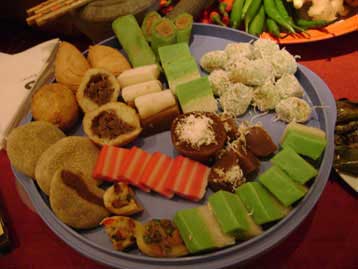
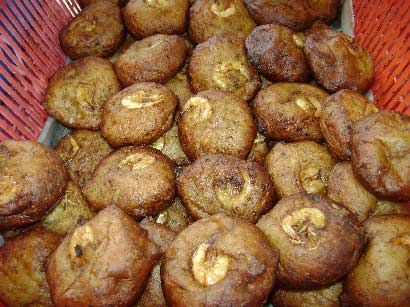
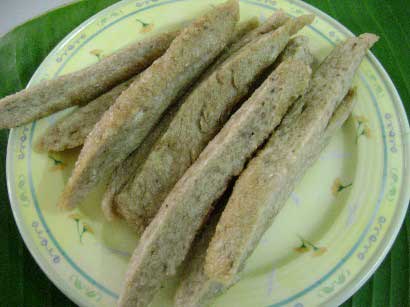 However, the good news is, unfinished keropok lekor, after boiling, can be sliced thinly and turned into the normal dried keropok by drying the slices in the hot sun.
However, the good news is, unfinished keropok lekor, after boiling, can be sliced thinly and turned into the normal dried keropok by drying the slices in the hot sun. 